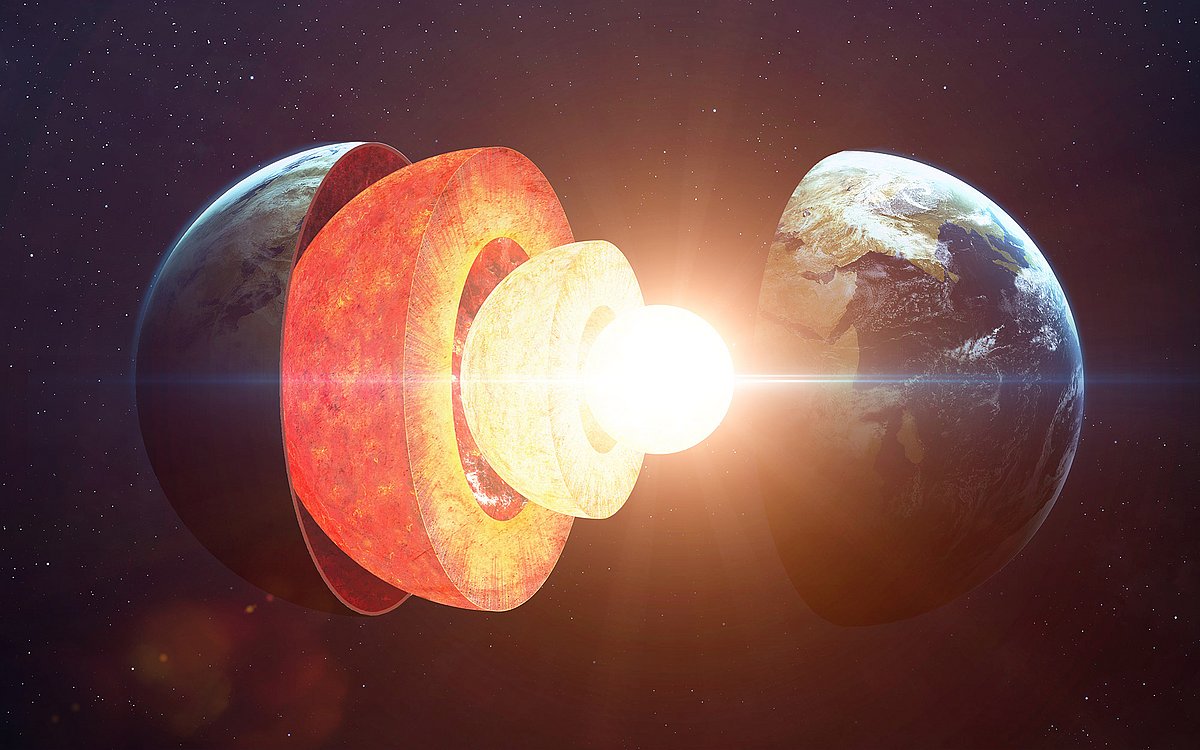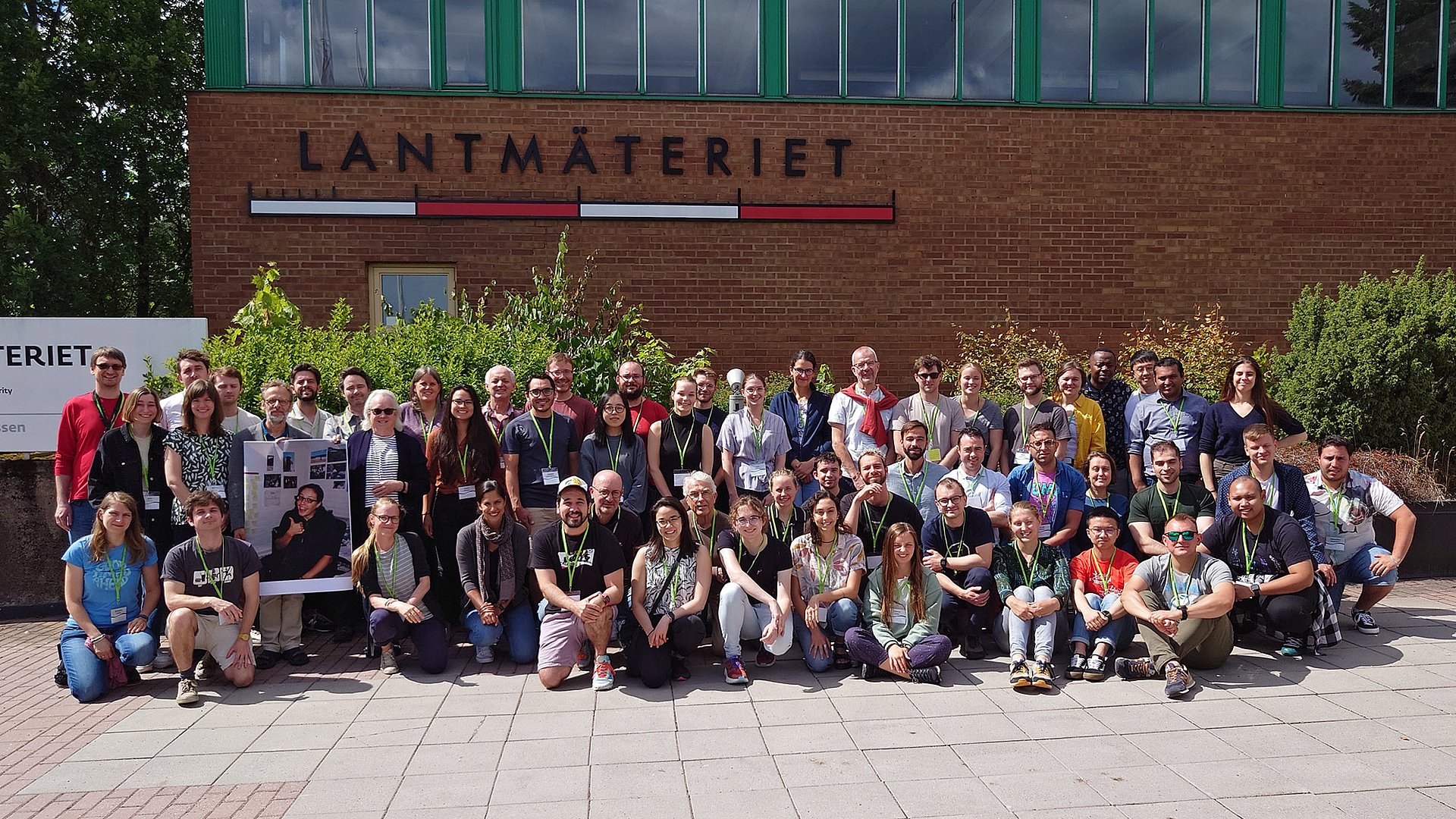Throughout its history, Earth has experienced significant changes, including alternating cold and warm periods that resulted in the formation and subsequent melting of kilometer-thick ice sheets across Northern Europe and North America. These ice ages caused the withdrawal of water from the oceans and pressed the Earth's surface beneath the ice sheets down by several hundred meters. In addition, the distribution of mass within the Earth changed and the rotation of the Earth was affected. Stress changes in the earth's crust were occasionally so strong that they led to earthquakes, especially towards the end of the glaciations. The Earth's response to all these changes is called glacial isostatic adjustment (GIA).
Text: Holger Steffen (Lantmäteriet, Sweden)
GIA is a global process that can be observed even thousands of years after the ice sheets vanished. This is due to the viscosity of the Earth's mantle: due to its high viscosity of an average of 1021 Pascal seconds (Pa s), it reacts with a strong time delay to rapid loading or unloading. To put this into perspective: water has a viscosity of around 1 Pa s, honey of 104 Pa s. As a result, the earth's surface in the formerly glaciated areas is still rising today, in Northern Europe at around 1 centimeter per year. People have adapted to land uplift and, for example, relocate a harbor seaward to accommodate gradual silting over time.
GIA is also distinctly observable in the measurements of the gravity field missions GRACE and GRACE-FO. The land uplift creates a mass deficit in the mantle beneath the uplifting area. Mantle material from the surrounding area flows into this area, and this mass change is what GRACE sees. It corresponds to just over 1 μGal per year and is therefore of a magnitude that obscures other processes such as long-term hydrological mass changes. GIA is also evident in the areas of today's large ice sheets in Greenland and Antarctica, as these also had a different total mass and mass distribution during the last colder period. The GIA signal of the changes at that time therefore masks today's climate-related mass changes in these regions. A good understanding and ultimately a precise correction of the GIA effect is therefore essential for GRACE data analysis.
Scientific analysis using GRACE satellite missions
Scientific analysis of the GIA signal in GRACE data began a few years after the launch of the first pair of GRACE satellites in 2002, as an observation time span of approximately 4 to 5 years was necessary to clearly identify the GIA signal. One focus was initially on the large-scale signal in North America. Tamisiea et al. (2007) and van der Wal et al. (2008) made substantial contributions to our understanding of GIA. Compared to existing GIA models, ice thickness in North America during the last glaciation was lower than previously known. At the same time, it was finally confirmed that the North American ice sheet once had two peaks (one each to the west and east of Hudson Bay). In Northern Europe, however, GRACE affirmed the previous GIA models based on terrestrial deformation and gravity measurements in several studies, see a summary in Steffen & Wu (2011). In the polar regions, however, determining the GIA signal with GRACE remains challenging. Here, precisely separating current climate-related ice mass changes poses a considerable obstacle due to the limited availability of terrestrial measurements in these areas.
For the increasingly important hydrological studies, the GIA signal in the GRACE observations is now corrected with adequate models. Wang et al. (2013), for example, were able to show the recovery of groundwater storage in Canada after an extended dry period with improved GIA correction. However, work continues - not least due to the problems in the polar regions outlined above - towards improved GIA models, whereas the improvement of the GIA correction for GRACE has provided additional and urgent motivation. The latest GIA models consider the physical properties and heterogeneity of the Earth as well as the latest findings on the physics and distribution of ice sheets as well as their effects on groundwater and oceans.

Observing movements of the solid Earth with the GRACE satellites
Mass redistributions in the atmosphere, in the ocean, on the land and in the earth's crust stress the earth's body, which gives way under these and deforms. On very long time scales, the rock does not behave elastically, but sometimes like a viscous fluid. Only by understanding these internal processes can we correctly interpret the changes in gravity associated with the deformations observed by the GRACE satellites.
Further training of young scientists

Foto: Holger Steffen
The worldwide number of researchers and methods for GIA model development is continuing to grow. International summer schools take place at regular intervals to train a new generation of scientists who can develop and use GIA models. The GIA Training School in July 2023 in Gävle, Sweden, welcomed 40 students (out of over 180 applicants) from 20 different countries on 6 continents. The five-day event included lectures and exercises that incorporated current research topics and passed on the experience and knowledge of leading scientists - including colleagues from the Potsdam Institute for ClimateIn contrast to weather, which refers to daily or very short-term events, climate refers to an average condition in the atmosphere over a longer period of 30 to 40 years. All processes such as average temperature, precipitation, wind direction, wind s... Impact Research and the GFZ - to the next generation. All lectures were recorded and published (link) and have already been accessed hundreds of times. The course materials also remain publicly available there and can be used by the global research community. The overwhelming interest in the school and the successful outcomes for participants demonstrate a strong demand for this type of resource as an opportunity for young researchers to address the highly complex and multidisciplinary area of GIA modeling. The perfect GIA correction of GRACE/GRACE-FO data and future gravity satellite missions will always be one of the most important goals.
References
Steffen, H., and Wu, P. (2011). Glacial isostatic adjustment in Fennoscandia - a review of data and modeling. J. Geodyn. 52 (3-4), 169–204, DOI: 10.1016/j.jog.2011.03.002.
Tamisiea, M.E., Mitrovica, J.X., and Davis, J.L. (2007). GRACE gravity data constrain ancient ice geometries and continental dynamics over Laurentia. Science 316, 881, DOI: 10.1126/science.1137157.
van der Wal, W., Wu, P., Sideris, M.G., and Shum, C.K. (2008). Use of GRACE determined secular gravity rates for glacial isostatic adjustment studies in North-America. J. Geodyn. 46, 144–154, DOI: 10.1016/j.jog.2008.03.007.
Wang, H., Jia, L., Steffen, H., Wu, P., Jiang, L., Hsu, H., Xiang, L., Wang, Z., and Hu, B. (2013). Increased water storage in North America and Scandinavia from GRACE gravity data. Nature Geosci. 6(1), 38–42, DOI: 10.1038/ngeo1652.
